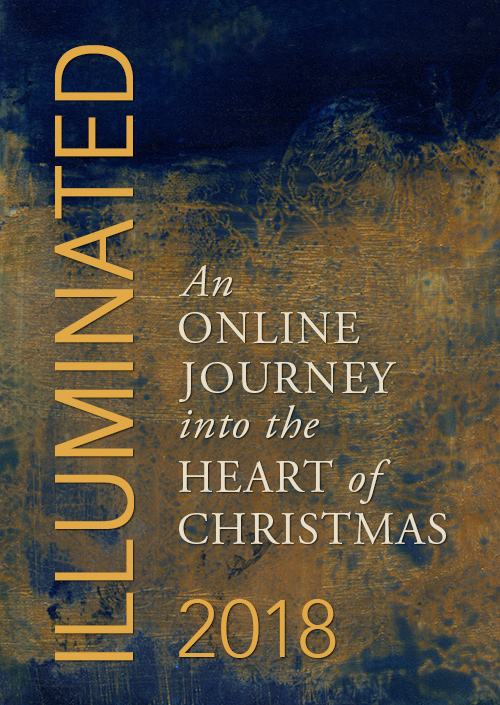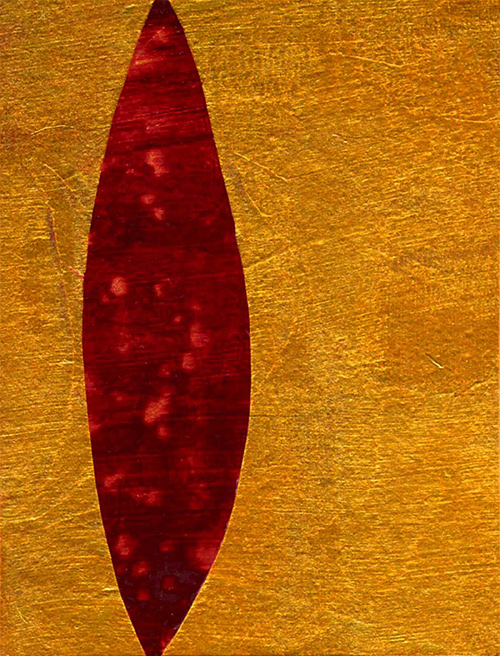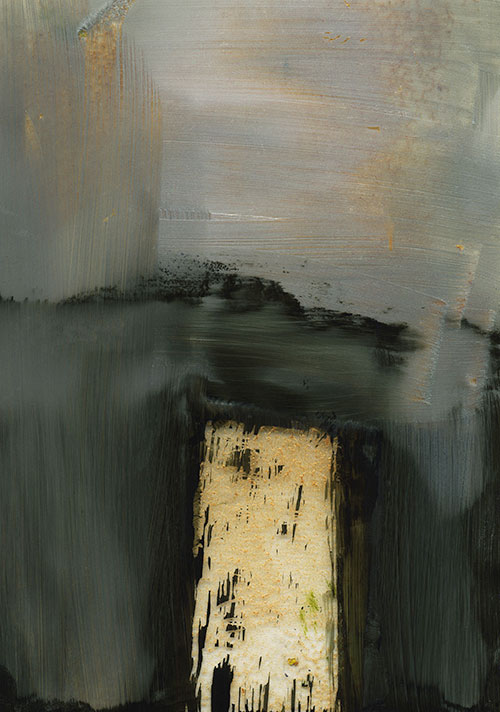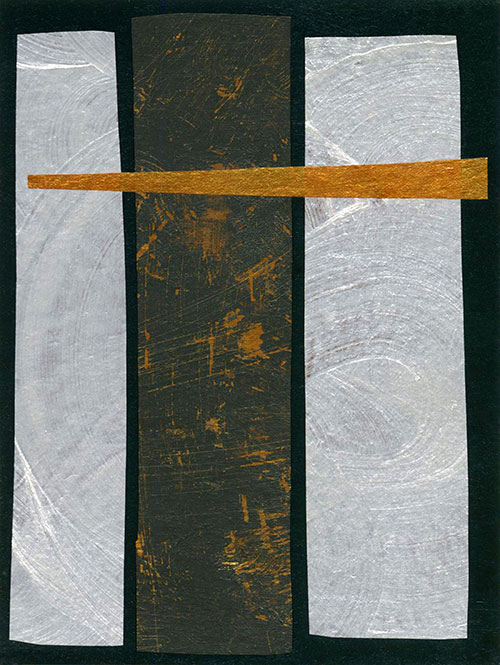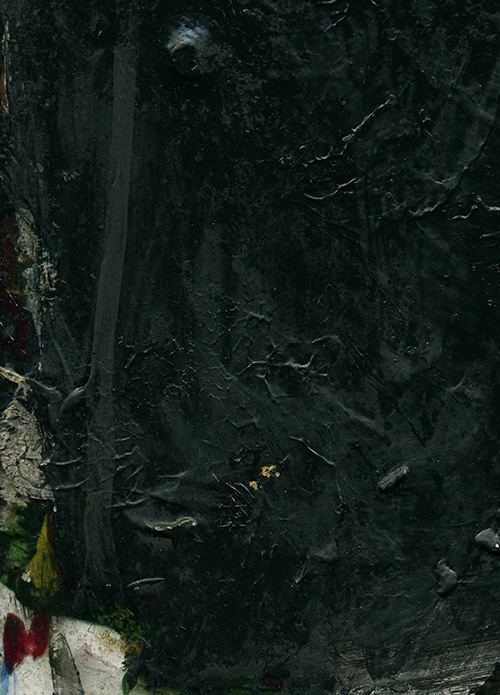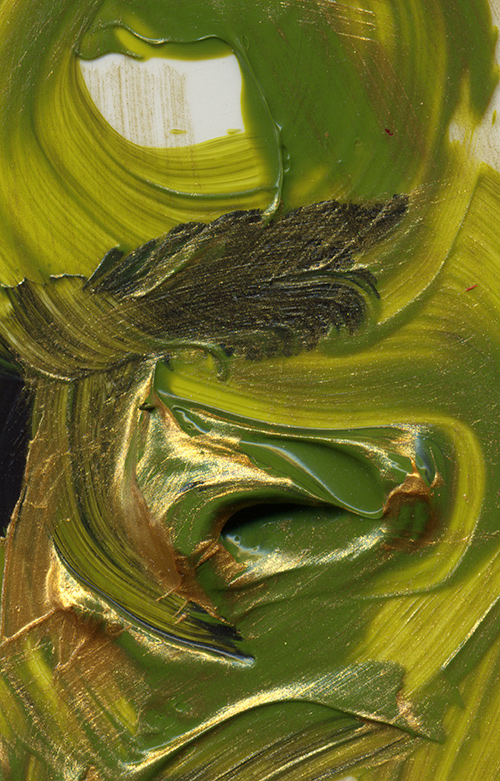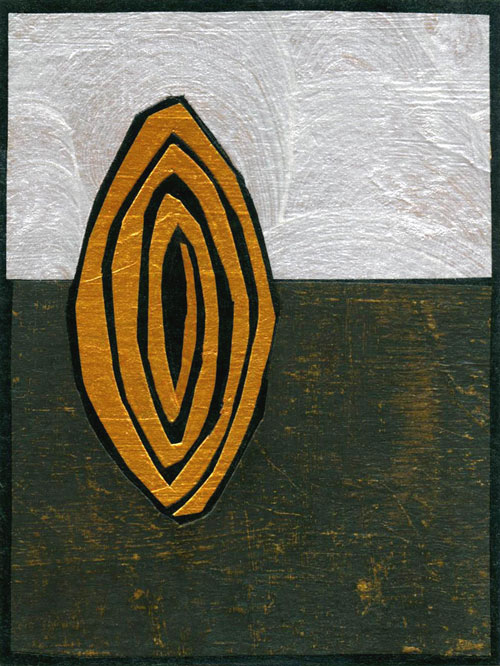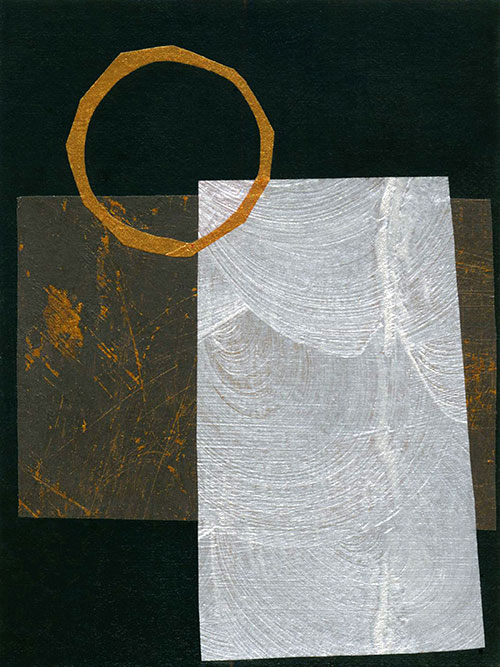 Image: Holy Thursday II © Jan Richardson
Image: Holy Thursday II © Jan Richardson
Readings for Holy Thursday/Maundy Thursday:
Exodus 12:1-4, (5-10), 11-14; Psalm 116:1-2, 12-19;
1 Corinthians 11.23-26; John 13.1-17, 31b-35
A blessing is not finished until we let it do its work within us and then pass it along, an offering grounded in the love that Jesus goes on to speak of this night.
—from Holy Thursday: Take a Blessing
The Painted Prayerbook, April 2011
As this season has been unfolding, we’ve been talking about the wild language of Lent, noticing the words that have tugged at our attention, the vocabulary that has helped us make a map through these wilderness days.
Now the language intensifies, and the vocabulary takes on an urgent edge as it traces a path through these days of horror and of hope. Moving into Holy Week, we listen close and more closely still to the words being said now, as one does before a death.
Holy Thursday draws us to the table, in the company of Jesus and the disciples as he begins to speak his final words on this side of his dying. The disciples will not understand everything Jesus has to say, will not be able to comprehend fully the import of what he is telling them, but his words will sear themselves into their hearts nonetheless. These are the words that will return to the disciples later, in that bewildering time known as after. These are the words that will comfort them and also stir their courage for the path that waits for them still.
But for now, they, and we, are at the table. As the night unfolds, we will see that the word at the center of Jesus’ vocabulary is this:
Love.
In John’s Gospel, in what’s known as the Farewell Discourse (John 13:31-17:26), Jesus will speak the word love thirty-one times. In these final hours before his death, the word will ring repeatedly, a potent echo of the moment when Jesus rose from the Jordan River, the waters of baptism dripping from him, and heard himself named Beloved. This night, he will give this word to his friends, passing along to them the love he received at a moment he needed it most.
But Jesus does not begin there. As he works to convey what he most wants his companions to know, he does not start with spoken words. Instead, he takes a towel, a basin, water. He begins to wash the feet of his friends, the drenching itself another echo of his baptism and his naming as Beloved.
Perhaps more than anything Jesus could say this night—and he goes on to say quite a lot as he opens his heart at the table—this washing speaks to the hearts of the disciples. In this sacramental gesture, we see Jesus’ vocabulary in action. Word made flesh.
The love that Jesus enacts and speaks this night is an extraordinary gift and grace. But, as the disciples will hear Jesus say at the table, such a grace is not reserved solely for them. They are to pass the gift along: to enact this word, to live this word, to give flesh to this word in this world.
For I have set you an example, Jesus tells them as he returns to the table after washing their feet, that you also should do as I have done to you (John 13.15).
This is my commandment, Jesus will say to them a little later, as they linger at the table, that you love one another as I have loved you (John 15.12).
As we approach the table this week, how will we listen for the love that meets us there? How will we allow ourselves to receive the gift and the grace of this love? When we leave the table, how will we carry this love with us? How will we enact this love, giving it flesh for the life of the world?
Here at The Painted Prayerbook, where we are celebrating our tenth anniversary, we have traveled through Holy Week many times. In a series of posts this week, I’ll be gathering up reflections I’ve written for Holy Week across the past decade, as well as for Easter Sunday. In the links below, you’ll find a collection of reflections for Holy Thursday. I’m tucking them beside your plate, grateful for your companionship at this table. Blessings.
Holy Thursday: Blessing the Bread, the Cup
Holy Thursday: Take a Blessing
Day 38/Holy Thursday: Cup of the New Covenant
Holy Thursday: Feet and Food
Using Jan’s artwork
To use the image “Holy Thursday II,” please visit this page at janrichardsonimages.com. (This is also available as an art print. After clicking over to the image’s page on the Jan Richardson Images site, just scroll down to the “Purchase as an Art Print” section.) Your use of janrichardsonimages.com helps make the ministry of The Painted Prayerbook possible. Thank you!
Using Jan’s words
For worship services and related settings, you are welcome to use Jan’s blessings or other words from this blog without requesting permission. All that’s needed is to acknowledge the source. Please include this info in a credit line: “© Jan Richardson. janrichardson.com.” For other uses, visit Copyright Permissions.
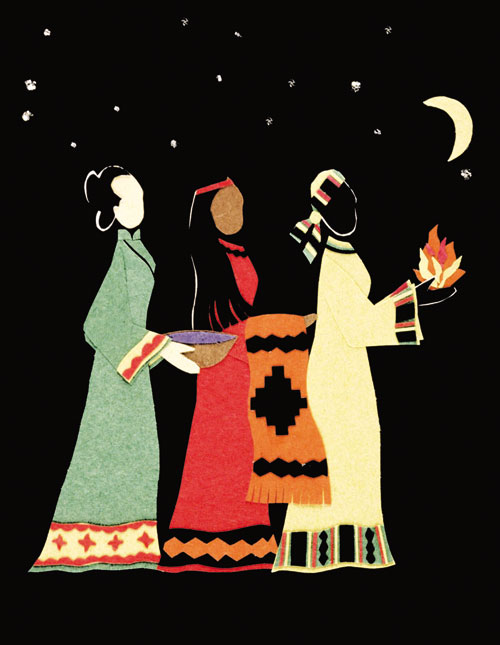 Image: Wise Women Also Came © Jan Richardson
Image: Wise Women Also Came © Jan Richardson